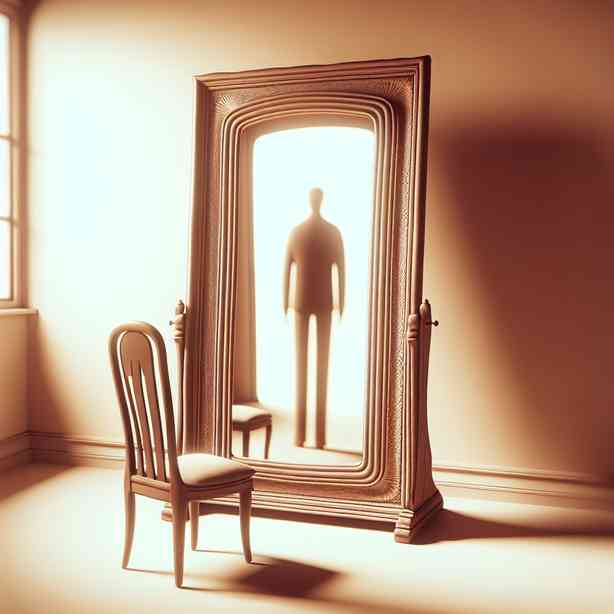
A mirror that makes you look taller is not just an ordinary reflective surface; it is a fascinating tool rooted in principles of design and psychology. In today’s world, many individuals seek ways to enhance their appearance and boost their confidence, particularly regarding height. This quest often leads to the exploration of various techniques, and one notably effective method is utilizing specific mirror designs.
The concept behind a mirror that makes you appear taller involves playing with reflections, angles, and lighting. Generally, mirrors have the inherent capability to alter perceptions. The right design can accentuate vertical lines and create an illusion of height. For instance, a full-length mirror that is positioned strategically can give the appearance of elongated legs and a slimmer silhouette.
In many cases, the vertical orientation of the mirror itself can significantly impact how someone perceives their height. Tall, narrow mirrors tend to be the most effective at creating an illusion of height. They draw the eye upward, making the viewer feel taller than they actually are. Additionally, when these mirrors are placed in well-lit areas, the natural light enhances features and can further accentuate height.
Beyond the physical attributes of a mirror, psychological factors also come into play. When individuals look into a mirror that reflects a taller version of themselves, it can lead to a boost in self-esteem. Confidence is often linked to how we perceive ourselves, and using mirrors effectively can transform one’s self-image. This becomes particularly relevant in social settings; a person who feels taller and more confident may carry themselves differently, which can impact how others perceive them as well.
The choice of frame and color around the mirror also plays a crucial role in height perception. Slim, minimalist frames tend to keep the focus on the reflection rather than on the frame itself, further enhancing the height illusion. Bright colors or patterns can draw attention away from the vertical lines, so opting for neutral or darker shades can create a sleek look that adds to the height illusion.
Furthermore, the placement of the mirror is equally important. Hanging the mirror higher on the wall can create additional vertical lines, which can enhance the perception of height. If the mirror is placed across from a window, it can reflect natural light and create an open space that seems more expansive, contributing to the feeling of height. Mirrors can also reflect other vertical elements in the room, such as high ceilings or tall furniture, further enhancing the perception of height.
There is also an emerging trend in home decor that emphasizes using tall mirrors to create an illusion of larger, more spacious rooms. Designers often recommend using mirrors to visually expand a space; this effect can be particularly useful in small rooms or apartments, where every inch of perceived space counts. Placing a tall mirror strategically can make an area feel more expansive and less confined, which indirectly can contribute to the feeling of being taller or more liberated in one’s space.
In addition to practical applications, using mirrors in fashion is another area where the height illusion plays a significant role. Many people use mirrors to experiment with different outfits and styles. When trying on clothes, a person may prefer to use a full-length mirror that allows them to view themselves in an elongated perspective. This way, they can assess how their clothing choices affect their silhouette, and make selections that enhance their perceived height.
It is also important to consider that the technology behind mirrors is ever-evolving. Smart mirrors, which can display digital information, augment the experience of looking into a reflective surface. Some smart mirrors come equipped with features that allow users to visualize themselves in different outfits or styles in real-time. This can create an even more positive self-image, as users can see themselves looking taller in their selected choices—a powerful tool for both fashion and self-esteem enhancement.
Finally, the psychological impact of mirrors extends beyond height perception. Engaging with a reflective surface can foster self-reflection; understanding how we perceive ourselves versus how we truly are can lead to greater self-acceptance. Embracing one’s unique qualities, including height, is essential in nurturing a healthy self-image.
In conclusion, a mirror that makes you look taller weaves together elements of design, psychology, and self-perception. Through the right choice of mirror, placement, and understanding how to utilize reflections effectively, one can enhance their appearance and cultivate a more confident persona. By focusing on these design elements and psychological impacts, individuals can harness the power of mirrors to create not only an illusion of height but also a deeper appreciation for themselves. This journey into understanding mirrors offers a playful approach to self-image that can lead to profound transformations in how individuals see themselves in the world.


